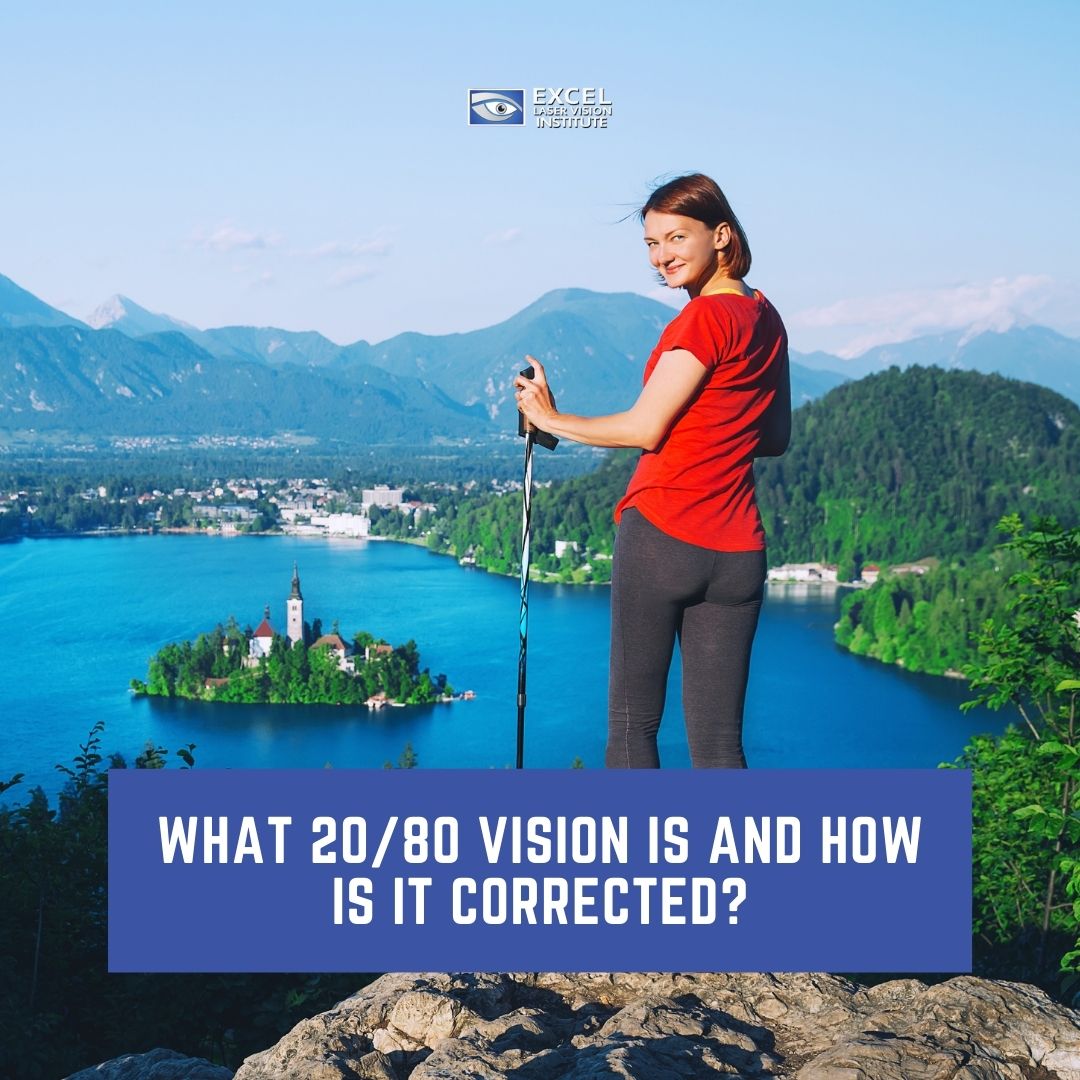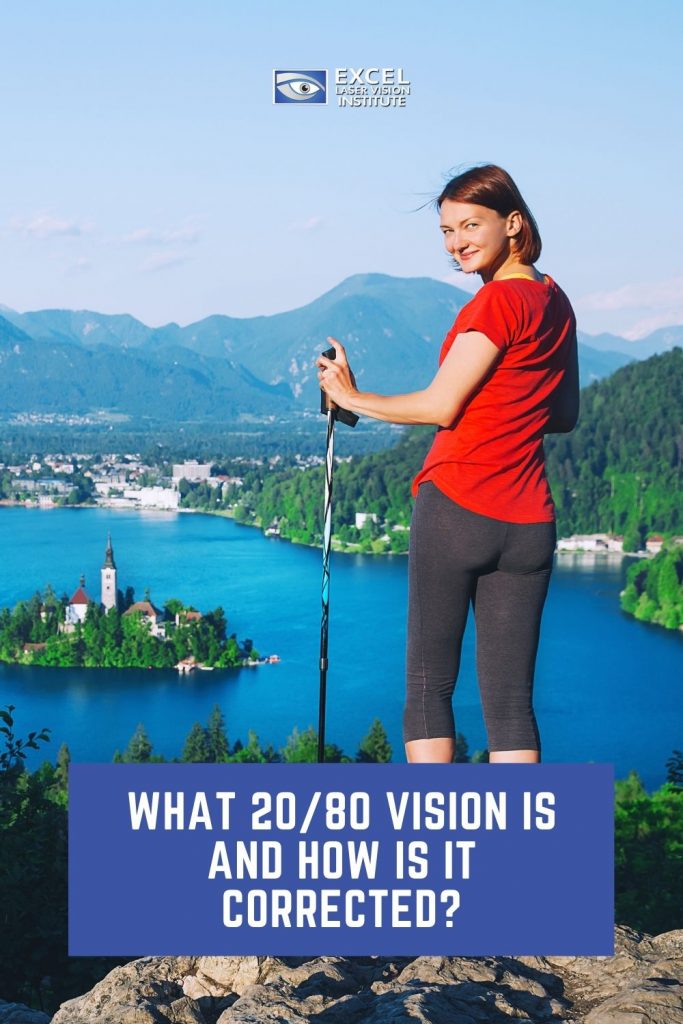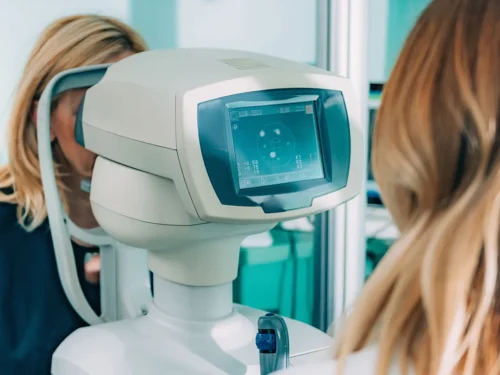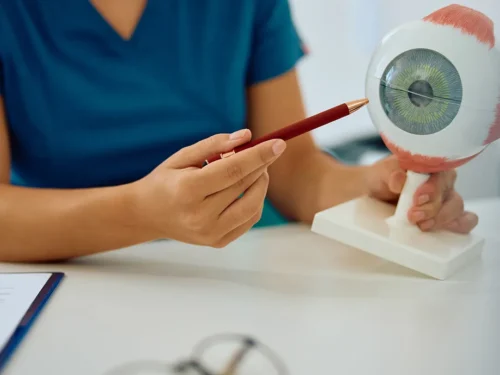
When patients think about visual acuity, it isn’t a shocker to learn that they believe that 20/20 vision is the gauge of good eyesight. We all, at some point in our lives, have tried to reach this goal. Remember when your parents told you you had to eat all your carrots, get enough sleep, don’t sit too close to the T.V., and don’t read in low lights to avoid straining your eyes? Yup, most of us got the same advice, and a good majority of us are still as blind as bats.
Fill out the form for a Free Evaluation
In any case, when you visit a laser eye surgery clinic in Los Angeles, you will be told that the biggest determinant in declining vision is sometimes something you can’t even avoid. That is because we all have birthdays. Aging is the biggest reason why visual acuity alters, besides eye diseases and poor nutrition – even if you eat more carrots than Bugs Bunny himself!
What is 20/80 Vision?
Doctor Moosa of Excel Laser Vision Institute, a LASIK eye center in Los Angeles, explains that when a person has 20/80 vision, the individual‘s eyesight is already in the low vision range. 20/80 is an average visual impairment as regulated by the International Council of Ophthalmology (ICO). Sometimes LASIK doctors in Los Angeles may declare that your visual acuity is 0.25, essentially the same as 20/80. It is just labeled in its decimal notation, or you can put it in terms of 4.0 for visual angle.
Therefore, what does this all refer to? The LASIK Los Angeles clinic uses the interpretation of the ICO as a visual impairment that is still more functional than someone with a 20/200 vision, who is in a severe visual impairment range.
If a person has this condition, low vision is apparent but not to a point where the patient would be considered legally blind. If you take a look at the average size of common newsprint, which measures at 1 M. If you don’t know what 1 M is, the Sloan M system is used to measure letter size in a reading chart. Louis Sloane first introduced this to the American Journal of Ophthalmology in 1959 and has been utilized as the standard by the Committee on Vision of the U.S. National Research Council ever since it was first popularized.
This is what is used during visual acuity tests. The M-unit is linked to a fixed 1-meter distance when one of the letters in Sloane’s reference standard spans a visual angle of 5 min of arc, which is a unit angular measurement. Therefore, research lets us know that 1 M is the same as the average newsprint size, as declared in most published research.
Of course, when visual acuity becomes weaker, a person reads better at a shorter distance, usually with reading glasses. Normally, newsprint is read clearly at a distance of 40 cm. However, if you are one of the lucky ones with 20/20 vision, you can read 1 M at 100 cm, so reading the small print isn’t a challenge for these guys.
However, if the patient has 20/80 vision, 1 M is read at 25 cm, so patients have to use strong lenses to read clearly, or in the case of nearsightedness, they have to hold the paper nearer to the eyes than someone with 20/20 vision.
What Causes Visual Acuity To Change To 20/80?
As we age, visual acuity worsens. You may not require eyeglasses or contact lenses just yet, but at some point, your ophthalmologist will advise you to start wearing them. When you get to your sixties, the probability of having advanced presbyopia increases, and the appearance of floaters. Also, when women reach their menopausal stage, they are more prone to dry eyes, resulting in visual acuity issues.
Age-related determinants that can affect visual acuity and lead to low vision, according to the American Optometric Association (AOA), include:
- Smaller pupil size.
- Absence of peripheral vision.
- Macular degeneration.
- Glaucoma.
- Traumatic brain injury.
- Detachment of the retina.
Can You Correct 20/80 Vision?
You can correct your vision. For example, your doctor may recommend eyeglasses or contact lenses. However, if you are searching for a long-term solution, it may be corrective surgery.
Advanced methods of eye treatment technology can produce results near 20/20 vision. Sometimes light adjustable lenses and other advanced intraocular lenses are used to treat cataracts so patients can receive improved vision.
Still, a well-known procedure known as LASIK can help you achieve a patient’s goal of 20/20 vision or even better when possible. If you are a good candidate for this procedure, then your likelihood for improvement can be based on pre-operative testing. LASIK is an effective way to see clearly without the need for eyeglasses or contact lenses.
The alternatives to LASIK are PRK, ICL, RLE, and refractive cataract surgery. These are some of the procedures that eye doctors recommend to patients depending on their condition.
Ultimately LASIK is performed to help correct a patient’s vision to a level that keeps them comfortable and highly satisfied.
Where to get LASIK in Orange County or Los Angeles
You should never put your eyes in danger because they are very important to you. Make sure you go to an eye clinic that can make you feel comfortable throughout the whole process.
Yes, indeed, LASIK can be expensive, but that doesn’t mean that it’s not a smart personal investment. At Excel Laser Vision Institute, we are aware that paying out-of-pocket is something that most patients are prepared to do, so we have made it simpler for our patients to achieve better vision. We have several financing options that you can avail yourself of for better eyesight.

Choosing a LASIK Provider
When considering LASIK surgery, it’s crucial to choose a reputable provider for safe and effective treatment. Excel Laser Vision Institute, led by Dr. Ferzaad Moosa, offers comprehensive LASIK services in Orange County and Los Angeles. With over 23 years of experience, including specialized training at Harvard Medical School, Dr. Moosa is one of the most experienced LASIK surgeons, specializing in all laser LASIK, SMILE, PRK, Contoura-Topo guided LASIK, and wavefront-optimized all laser LASIK.
1. Board Certification: Dr. Moosa is board-certified and has undergone specialized training in refractive surgery, demonstrating his expertise in the field.
2. State-of-the-Art Technology: Excel Laser Vision Institute utilizes the most advanced technology, including the Wavelight EX500 laser and the VisuMax, to ensure precise and accurate results for LASIK patients.
3. Patient Reviews and Testimonials: Dr. Moosa and his team have received glowing reviews and testimonials from previous patients, highlighting their exceptional care and successful outcomes.
4. Consultation Process: Excel Laser Vision Institute offers a comprehensive consultation process, where Dr. Moosa evaluates your candidacy for LASIK surgery and addresses any questions or concerns you may have.
5. Follow-up Care: Dr. Moosa and his team provide personalized follow-up care to monitor your progress after LASIK surgery, ensuring optimal results and satisfaction.
6. Cost and Financing Options: Excel Laser Vision Institute offers competitive pricing for LASIK surgery and provides financing options to make the procedure more accessible for patients.
By choosing Excel Laser Vision Institute and Dr. Ferzaad Moosa for your LASIK surgery, you can rest assured that you are receiving top-quality care from a trusted and experienced LASIK provider. Contact Excel Laser Vision Institute today at (888) 957-3255. Or else, visit our website to learn more: https://www.exceleye.com/.



